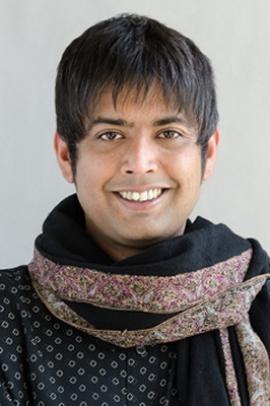Sugata Ray
Sugata Ray is Associate Professor of South and Southeast Asian art and architecture in the History of Art Department. Trained in both history and art history, Ray’s research focuses on the intersections among early modern and colonial artistic cultures, transterritorial ecologies, and the natural environment. His first book, Climate Change and the Art of Devotion: Geoaesthetics in the Land of Krishna, 1550–1850 (2019), examined the interrelationship between matter and life in shaping creative practices in the Hindu pilgrimage site of Braj during the ecocatastrophes of the Little Ice Age (ca. 1550–1850). As an extension of his interest in the field of eco art history, Ray has coedited Ecologies, Aesthetics, and Histories of Art (2020; with Gerhard Wolf and Hannah Baader, Kunsthistorisches Institut in Florenz – Max-Planck-Institut) and Water Histories of South Asia: The Materiality of Liquescence (2020; with Venugopal Maddipati, Ambedkar University, Delhi).
Sugata Ray’s current book project, Matter, Material, Materiality: Indian Ocean Art Histories in the Early Modern World, focuses on the global trade in natural resources and luxury objects that shaped ecocultural perceptions of the Indian Ocean in the early modern period. In the past, Ray has published essays on theories of collecting and archiving, postcolonial theory, and methodologies for a global art history in journals such as Art History and The Art Bulletin and guest edited a special issue of Ars Orientalis (2018) on translations and terminologies. His 2016 essay on the collecting of Islamic art in the United States was awarded the Historians of Islamic Art Association’s Margaret B. Ševčenko Prize.
Affiliated with the Department of South & Southeast Asian Studies (0% appointment), Sugata Ray teaches courses on South and Southeast Asian art, as well as thematic seminars on global early modern art, eco art history, theories of collecting and archiving, postcolonial theory, and methodologies for a global art history. His doctoral students are currently working on a range of topics including the global histories of Rajput painting, exchanges between Southeast Asia and the Americas in the early modern period, and maritime networks in the Indian Ocean region.

